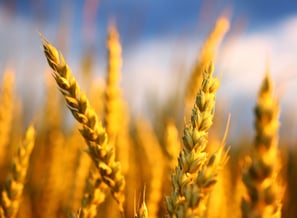Originally published : Fri, November 3, 2017 @ 1:13 PM
Updated : Mon, September 19, 2022 @ 2:16 PM
With the global population predicted to reach 9 billion people within the next 35 years, we will need to double the annual yield increases to avoid the impending food crisis. This challenge is exacerbated by unseasonal climate fluctuations that can destroy entire harvests – even in modern agricultural settings.
Rewind to last summer in the U.S., when southern-grown peaches are usually at their most delicious. But not last year - many U.S. farmers have faced a peach crisis. In South Carolina alone, as much as 90 percent of the crop had disappeared. In Georgia, often known as the Peach State, a similar story appeared.

Selective breeding and controlled hybridization have been used for centuries to adapt plant and animal species to deliver improvements in yield. However, maintaining these rates of improvement will require renewed genetic interventions and dramatic improvement in agricultural practices.
So what can be done to help feed the world cost effectively and in a limited amount of time?
Plant and animal breeders are going to need to look to genomic selection techniques, otherwise referred to as genomic prediction, to help navigate this crisis. According to a paper recently published in the journal Nature Genetics, the problem lies in the fact that traditional technologies are “expensive and require specialist skills” and prohibit their use. These current technologies have also hit their ceiling for how much genetic gain breeders can actually achieve. What is needed is a cost effective, target enriched sequencing approach. One that can use NGS instrumentation, and move away from array platforms, and look at large numbers of SNPs, and in turn increase food production by 4-6 per cent every year.
Over the years, the application of genomic selection has been lagging in the public-sector of plant breeding programs, which is exactly why the introduction of LGC’s SeqSNP is so exciting and vital. This service will be able to do more per unit of a given resource. To learn more click here.
It’s no secret that food prices are on the rise. The need for innovation in agriculture is necessary, more so now than ever before. Improving selection, reducing costs, and providing a platform that “unifies breeding approaches, biological discovery, and tools and methods” is essential to tackle the food crisis that is eminent.
SeqSNP is the new tool for breeders to tackle the challenges of agricultural sustainability in the coming years, to see how LGC will be helping to feed the world for the years to come, simply click here.
Hickey, J. M., Chiurugwi, T., Mackay, I., Powell, W., & Implementing genomic Selection in CGIAR Breeding Programs Workshop Participants. (2017). Genomic prediction unifies animal and plant breeding programs to form platforms for biological discovery. Nature Genetics, 49(September 2017), 9th ser., 1297-1303. Retrieved September 1, 2017, https://www.nature.com/articles/ng.3920.epdf

